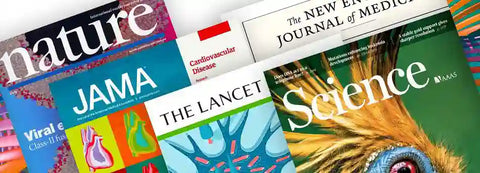你的研究論文是否適合當今的學術期刊
曾經有一段時間,學術和科學期刊上發表的文章必須篇幅較長,才能被視為真正健康的學術成果——這種學術成果牢固地紮根於大量的數據、每個結果的詳細描述、數頁的筆記和長長的參考文獻列表中。這些元素仍然是提交給學術期刊的文章的有效和必要的方面,並且在書籍和論文的較長格式中,專門用於它們的空間仍然可以與它們在早期研究中的作用和重要性相匹配。然而,當今的學術和科學期刊面臨著發表越來越多的文章以及快速發表這些論文的挑戰。大多數學術期刊也致力於吸引更廣泛的受眾,而不僅僅是專業讀者,而一個世紀前,專業讀者幾乎是此類期刊的唯一消費者。這種趨勢意味著,現在提交給學術和科學期刊的論文往往更精簡、更簡潔,而那些表現出適當適合度的寫作更有可能被接受並成功出版。
有多種方法可以精簡和修剪您的文章以提交給學術或科學期刊,但請務必先熟悉期刊提供的作者指南以及該期刊最近發表的一些論文。特別注意長度和結構要求以及發表的論文遵循指南的方式,同時以專業的方式呈現複雜的研究。如果您在起草論文時牢記期刊的要求和文章篇幅越來越短的總體趨勢,那麼以後就不需要進行太多的修剪和修改。然而,以較長模式撰寫的論文可以在其開發的任何階段有效地縮減到合適的大小和形狀,並且一些作者更喜歡寫下他們認為有必要展示其研究和論點的內容,然後修剪其作品以符合期刊指南和偏好。
精心設計的結構可以增強主要論點的進展,並為不同類型的信息提供清晰劃分的部分,幾乎總是可以讓你用更少的文字來表達你的研究和想法。這也將使您的作品更容易被讀者閱讀,因此請認真考慮在期刊指示的結構要求內可用的組織選項。標題和副標題應引人注目,同時準確代表後面章節和小節的內容。複雜的數據和程序通常可以透過具有直接視覺衝擊力的表格和圖形更簡潔、更有效地傳達,但為了讓讀者更好地理解表格和圖形,表格和圖形需要描述性的標題、說明和標籤。在討論正文中的相關資料時引用每個表格或圖表的編號不僅是標準的學術實踐,也是確保讀者在表格和圖表對您的論點最重要的時候準確地查閱它們的最佳方法。
在很多情況下,這個主要論點也可以簡化。學術或科學論證通常會遵循多個論證思路,以描述和分析高級研究的複雜結果。對於書籍或論文來說,這是一種極好的方法,但透過強調最有趣或最具啟發性的結果來密切關注單一思路通常可以成為期刊文章的更有效策略。許多期刊允許添加註釋和附錄,有時用於補充檔案並且不包含在字數統計中,因此任何您無法完全刪除的額外材料或相互矛盾的結果都可以轉移到尾註或附錄中,以製作出更薄更簡潔的論文。
為什麼選擇我們的編輯和校對服務?
在 Proof-Reading-Service.com,我們透過龐大且極其敬業的學術和科學專業團隊提供最高品質的期刊文章編輯、論文校對和線上校對服務。我們所有的校對人員都是英語母語人士,擁有研究生學位,他們的專業領域涵蓋了廣泛的學科,因此我們能夠幫助我們的國際客戶進行研究編輯,以改進和完善各種學術手稿,從而成功出版。我們的稿件編輯和校對團隊中許多經過精心培訓的成員主要負責擬在學術期刊上發表的文章,運用嚴格的期刊編輯標準,確保每篇論文中使用的參考文獻和格式符合期刊對作者的指示,並糾正任何語法、拼寫、標點或簡單的打字錯誤。透過這種方式,我們使客戶能夠以清晰準確的方式報告他們的研究,以打動收購校對員並實現出版。
我們為各種科學期刊論文的作者提供的科學校對服務尤其受歡迎,但我們也提供手稿校對服務,並擁有校對和編輯所有學術學科以及其他學科手稿的經驗和專業知識。我們的團隊成員專門從事醫學校對服務,我們的一些專家專門致力於論文校對和手稿校對,透過最嚴格的博士論文編輯和期刊文章校對實踐,為學者提供提高格式和語言使用能力的機會。無論您是在準備會議論文以供展示,完善進度報告以供與同事分享,還是面臨編輯和完善任何類型學術文獻以供出版的艱鉅任務,我們專業團隊的合格成員都可以提供寶貴的幫助,讓您對您的書面作品更有信心。
如果您正在為學術或科學期刊準備一篇文章,或者計劃在不久的將來實現這一目標,那麼您可能會對一本新書《期刊出版指南》感興趣,該書可在我們的「期刊發表研究成果的技巧和建議」網站上找到。








